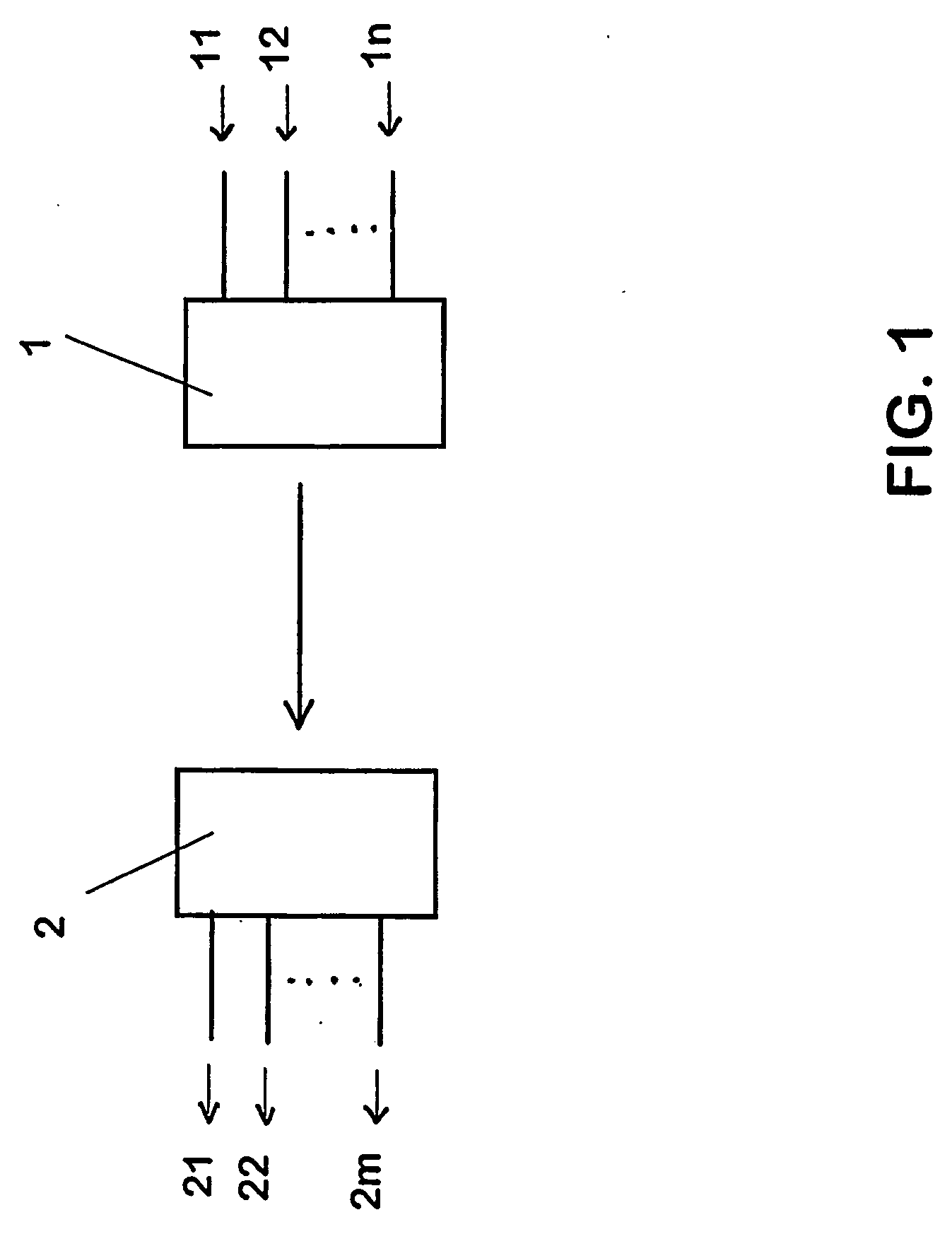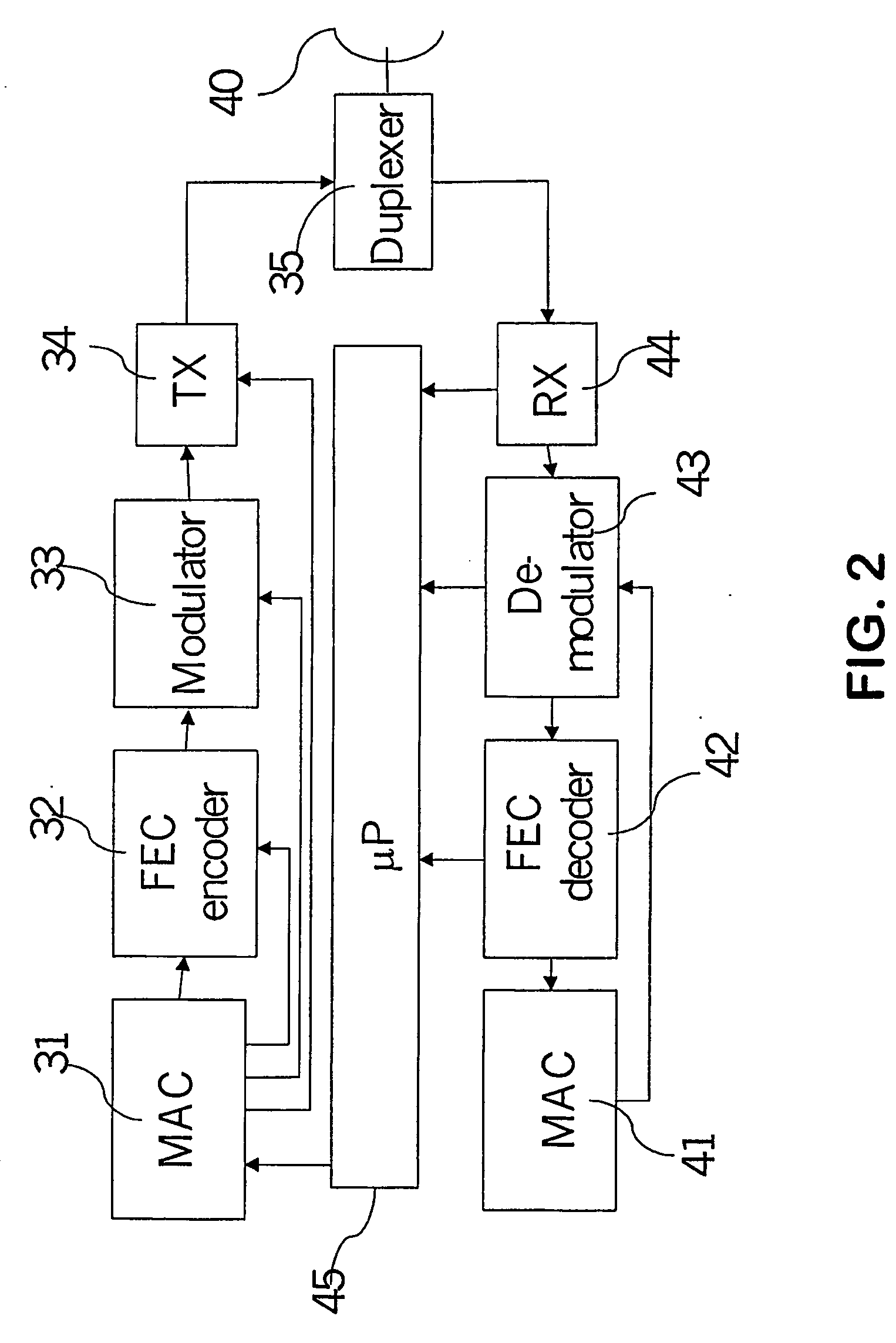Adaptive point-to-point microwave radio system
a microwave radio and point-to-point technology, applied in the field of adaptive point-to-point microwave radio systems, can solve the problems of limiting choice and often not being efficient in the use of air interfaces, and achieve the effects of improving the efficiency of air interfaces, improving cost and/or performance ratio, and changing weather conditions
- Summary
- Abstract
- Description
- Claims
- Application Information
AI Technical Summary
Benefits of technology
Problems solved by technology
Method used
Image
Examples
Embodiment Construction
[0028] The embodiment of a point-to-point microwave radio system according to the invention depicted in FIG. 1 can be employed for instance for establishing a fixed connection between a Broadband Wireless Access network and an ISP network.
[0029] The system can be either an FDD or a TDD based system which comprises a first transceiver 1 and a second transceiver 2. Between the two transceivers 1, 2 signals are to be transmitted bi-directionally and point-to-point over the air interface by using microwave radio signals. In FDD these signals are transmitted in frames or bursts in go and return channels and in TDD these signals are transmitted in transmit and receive frames or bursts. The first transceiver 1 is connected to n network interfaces 11, 12, . . . 1n, e.g. the respective interface of several Broadband Wireless Access network elements, while the second transceiver 2 is connected to m network interfaces 21, 22, . . . 2m, e.g. the respective interface of several ISP network elem...
PUM
 Login to View More
Login to View More Abstract
Description
Claims
Application Information
 Login to View More
Login to View More - R&D
- Intellectual Property
- Life Sciences
- Materials
- Tech Scout
- Unparalleled Data Quality
- Higher Quality Content
- 60% Fewer Hallucinations
Browse by: Latest US Patents, China's latest patents, Technical Efficacy Thesaurus, Application Domain, Technology Topic, Popular Technical Reports.
© 2025 PatSnap. All rights reserved.Legal|Privacy policy|Modern Slavery Act Transparency Statement|Sitemap|About US| Contact US: help@patsnap.com



